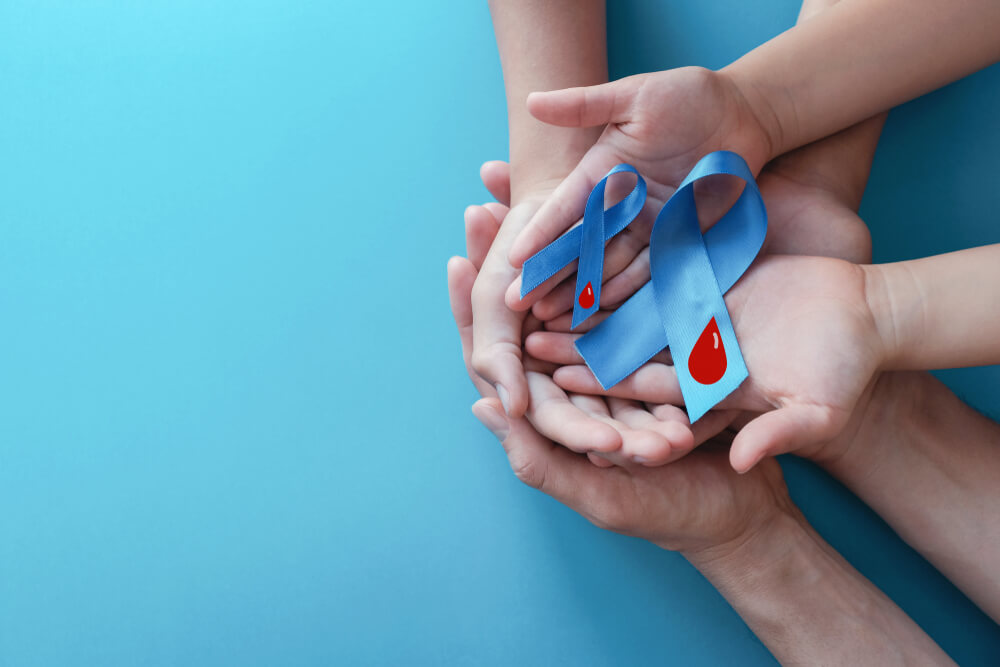Every year, November is National Diabetes Awareness Month, and November 14 is World Diabetes Day.
According to the American Diabetes Association, November has been designated Diabetes Awareness Month since 1975. It wasn’t officially acknowledged until the 1980s.
So, for over 40 years, the month of November has been designated as Diabetes Awareness Month, a time when organizations, people living with diabetes, their loved ones and caregivers, and other advocates come together to raise awareness about this disease. This promotes research, which in turn could end up saving lives.
However, it might be easy to lose track of time during the designated awareness month. The best way to get involved and maintain involvement is not always obvious. That’s why we at the Pediatric Endocrine and Metabolic Center of Florida have gathered these ideas for November diabetes month prep.
But first, let’s discuss the symptoms and signs of diabetes and the different types of this condition.
The Most Common Diabetes Symptoms
Every person is different. Therefore, you shouldn’t expect your symptoms to mirror anyone else’s. However, many people with diabetes suffer the four most prevalent symptoms: increased thirst, frequent urination, fatigue, and weight loss. These are the typical type 1 diabetes symptoms.
Other signs of diabetes could be:
- Eyesight problems
- Hunger increase
- Thrush or genital itch
- Longer wound healing
Symptoms of diabetes develop when glucose, generally used as an energy source, accumulates in the blood instead. Your body is trying to lower your blood sugar by excreting it in your urine, which causes you to feel more thirsty.
Thrush is caused by a fungal infection that thrives in environments with high quantities of glucose, such as urine. However, symptoms don’t afflict everyone. In fact, when diagnosed with type 2 diabetes, six out of ten patients show no symptoms at all.
Type 1 diabetes symptoms are difficult to ignore because they generally present rapidly. However, if left untreated, it can lead to dangerous complications such as diabetic ketoacidosis that could potentially cause a fatal coma.
Type 1 diabetes symptoms remain consistent regardless of age, even though most patients get their diagnosis confirmed in childhood or early adulthood. It’s possible that adults with type 1 diabetes won’t be as fast to recognize their symptoms as kids are, which could delay diagnosis and treatment.
When it comes to diagnosing this illness, type 2 diabetes is more difficult to notice in its early stages because of its gradual onset. However, uncontrolled type 2 diabetes can severely affect the entire body. These problems can often be avoided with early diagnosis and careful management of blood sugar levels.

Diabetes Month Participation Ideas
Take a Blue Circle Selfie
Put out the word at the start of the month that diabetes awareness is a cause close to your heart.
The blue circle now represents diabetes all around the world. Anyone with diabetes or knows someone who does can help spread awareness by posting a “blue circle selfie” on social media.
Through the International Diabetes Federation’s (IDF) official app, you can get the blue circle and use it for your new profile picture.
Share Your Diabetes Story
Are you in a creative mood? Perhaps you, a fellow diabetic, would want to discuss your experience managing the disease. There’s no requirement for you to launch your own blog, but feel free to do so if the mood takes you there.
Using social media platforms is a simple way to get going. For instance, you can create brief status updates for your social media accounts on Facebook or Twitter.
Here are a few questions to spark your imagination:
- How did you learn that you had diabetes?
- When did you first find out what was wrong?
- What were the first signs of diabetes you noticed?
- How did you manage to get beyond such challenges?
- What lifestyle adjustments have made the biggest difference?
- Do you have any myths about diabetes that you can dispel?
In case you don’t enjoy writing all that much, you can always share a video on Instagram demonstrating how diabetes technology has improved your life or submit a tried-and-true diabetic recipe.
Go the Distance for Diabetes Awareness
During diabetes month, there are many different events involving walks and rides for awareness. In the last weeks of the year, these activities raise awareness of diabetes via training, fundraising, and endurance challenges that are both safe and enjoyable.
Obviously, if you’re up for it, you can’t go wrong with this way of showing your support. However, it rarely happens that everyone interested can participate in these events for one reason or another. This is why plenty of online events, such as virtual Tour de Cure, are organized as well. That said, don’t forget to check out what’s happening in your area, both in actual and virtual reality.
The International Diabetes Federation (IDF) maintains an interactive map with information on more than 450 World Diabetes Day activities in more than 100 countries.
Pay a Visit to Banting House
It was at Banting House in London, Ontario, that insulin was first developed. There, in the small hours of a morning in 1920, Dr. Frederick Banting penned the theory that led to the discovery of insulin.
The fact that it has been around for a century and is still being celebrated is a testament to insulin’s importance to the lives of those who need it most. World Diabetes Day is celebrated annually on November 14, Banting’s birthday, to commemorate his lifesaving work.
In case you happen to be in the neighborhood during Diabetes Awareness Month, you can stop by Banting House and have a tour.
Virtual festivities are also possible. Feel free to sit back and relax on the couch while checking out one of Banting House’s weekly virtual puzzles.
Keep Learning About Diabetes
New studies, therapies, and scientific advances are constantly being made in the field of diabetes research. Self-management of diabetes is a continuous process that may necessitate reevaluation as one ages or changes one’s way of life.
Maintaining your knowledge of diabetes and your specific type of diabetes is essential, whether through self-study, formal education, or consultation with a healthcare professional.
If you want to learn more about diabetes and how it affects your health, scheduling an appointment with a Certified Diabetes Care and Education Specialist (CDCES) is an excellent first step. Find a diabetic educator in your area and read up on the subject. If you have questions, need one-on-one coaching, or just want some pointers on how to handle your illness, a CDCES can help.

Take Care of Yourself
The community that is the intended target of an awareness campaign may feel burdened by the month-long focus on the issue.
Therefore, don’t be afraid to take a break and relax a bit if you’re feeling stressed about upcoming events, social media shout-outs, or anything else.
If you have diabetes, care for someone who does, or are an outspoken advocate for people with diabetes, it is crucial that you take care of yourself.
You can always count on the Pediatric Endocrine and Metabolic Center of Florida (PEMC) if you’re worried about your child exhibiting the signs of diabetes.


